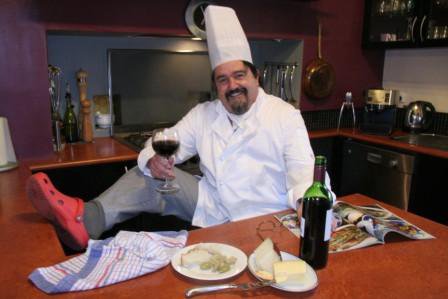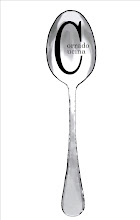“On the second day of the week
My great Dad cooked for me:
1 polpettone
2 plates of gnocchi
Lots of zucchini
And a greeeeen salad, to finish with!”
Il Polpettone
Polpettone literally means “big rissole”. Well, that’s what it is! A big, oval rissole. Like most Italian dishes, there are different local varieties and names: polpettone tradizionale; casalingo; alla toscana and so on.
And, of course, there is the Corrado version, a mixture of all of the above plus my own personal touch .
Polpettone is another example of the “cucina povera”, where people used anything available, hence the variations on the theme.
However poor the cuisine may be, though, the basic principles of Italian cooking do not change: you need the freshest and most genuine ingredients possible. And don’t forget to use herbs and the “odori” – carrots, celery, onion-
I am going to write down the basic recipe and some variations. Then you can do what I do: experiment and see what works for you, in terms of skills, taste and availability of products.
Half kilo minced veal (rump, possibly)(1)
100 g prosciutto cotto (ham), chopped (2)
2 eggs (3)
Freshly grated nutmeg
Flour
30 ml Oil and 50 g butter
Some “odori” chopped
30 g tomato purèe (4)
Salt and pepper to taste
(5)
Heat the oil and the butter in a largish pan (it has to contain the whole polpettone); add the vegetables, stir from time to time and cook gently on low-medium heat for 8-10 minutes.
In the mean time mix the ham, meat and eggs in a large bowl. Add the nutmeg and season the mixture. Shape the lot into an oval form like a footy ball and dust it in flour. Make sure the mixture is firm in texture. Should it be too soft you may want to add some bread crumbs.
Place the loaf in the pan and brown it on all sides, turning it very carefully.
Mix the purèe in some warm water (6) and add it to the pan.
Cover and cook slowly for 50-60 minutes. (7)
When done, slice the loaf into thick slices, glaze the pan juices and vegetables and spoon the liquids on the meat.
Polpettone can be served warm or at room temperature.
Variations
(1) My regular butcher at Preston Market, Mario, has a great mixture of lean veal and pork mince which I often use for polpettone. You may want to dispense of the ham, if you use this combination.
(2) The Tuscan variation (as reported by my guru, Marcella Hazan) calls for prosciutto or mortadella or Italian pancetta or even, in the absence of all of the above, for bacon.
(3) The right egg quantity is important in order to get the perfect consistency and firmness. You may find that 1 whole egg and a yolk will suffice.
(4) I often use 40-50 ml of passata, instead.
(5) Some versions of this recipe call for 20-30 g dried mushrooms (I recommend the porcini variety for a earthier, wilder taste), soaked in lukewarm water for half an hour. You can recycle their water to mix the purèe in step four.
(6) And speaking of mixing the purèe, I use white wine (what else?) for that purpose. It adds taste to the juices.
(7) I also tend to finish the polpettone off in the oven for the last 20-25 minutes. It makes the polpettone firmer and easier to slice.
Gnocchi burro e salvia (Butter and sage gnocchi)
Another simple, easy to make and yet tasty recipe. The secret here is to get the gnocchi out as they surface from the boiling water and do not let them cook too much in it. You need to toss them in the pan and you do not want the final product to be mashy. Also, for the success of the dish, use only Parmigiano or Grana padano and do not use their natural substitute, pecorino. The sharper taste of the sheep cheese (in both its Roman or Sardinian versions) will upset the subtle, delicate taste of the butter and sage combination.
Once you have taken the necessary precautions, the rest is VERY simple. In fact, it couldn’t be simpler!
Put some butter in a pan capable of accommodating the part-cooked gnocchi later. I’ll leave the quantities up to you. However, remember that the butter is the only sauce in this dish and has to coat your gnocchi. So don’t be stingy with it! Put 3-4 large sage leaves in the butter. Do not chop them with a knife; rather break them with your fingers, to avoid “bruising”. Let the butter and sage cook for a few minutes, while you are boiling some salted water for the gnocchi and then switch the burner off. When the water boils, place the gnocchi in. Using a meshed skimmer or a slotted spoon, remove the dumplings as they surface and put them in a colander to drain (you don’t want to water down the sauce). When all gnocchi are out, relight the pan burner, place the gnocchi in the mixture of butter and sage and finish cooking, tossing constantly to evenly coat the dumplings. Season to taste with salt and pepper and sprinkle a generous dose of Parmigiano on the dish. Serve immediately.
Zucchine marinate (marinated zucchini)
Another simple dish from yours truly (I am spoiling you guys). This dish was often present on our table, when I was young, so I don’t know whether it is a traditional dish or a Nonna Albina invention. Some sources report a Zucchini fried with vinegar, however I do not coat the zucchini wheels in flour and I don’t normally add garlic. But you can. In fact I might try this version myself next time I cook the dish.
Thinly slice 2 medium sized zucchini. Heat 50-60 ml of oil in a pan (more if you coat the vegetables with flour, which tends to absorb much of the liquid).
When the oil is hot, place the zucchini in the pan, a few at the time.
Remove the fried zucchini from the pan and sprinkle with good quality red wine or balsamic vinegar while they are still hot.
Put another batch of zucchini in and repeat the previous step until all zucchini are fried.
Place the vegetables on a serving dish. Season with salt and pepper and add flavours to taste by using garlic, basil, fresh oregano or any combination of the three.
You can prepare this dish ahead of time because it can be eaten cold. In fact you can make a larger quantity of zucchini and preserve them in a well-sealed, glass jar. Make sure there is enough oil to cover the vegetables. In this way they will last for several days in your fridge.
Green salad (see previous blog – Mixed salad)
(References: Marcella Hazan – The Classic Italian Cookbook – MacMillan, London, 1981)

